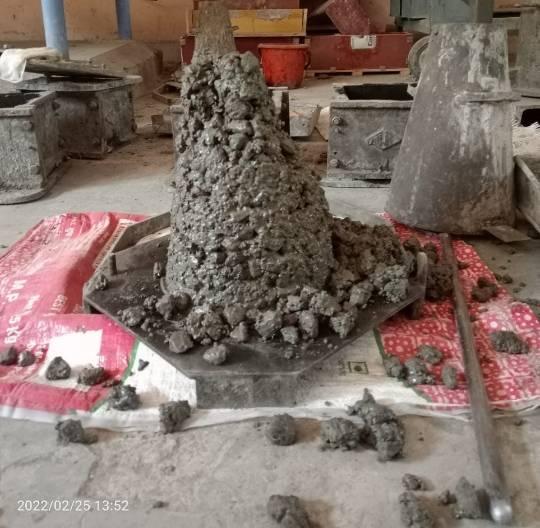
1 minute read
Volume
a) Slump cone test Use- To find out workability and consistency of concrete. To find out how easily it can handle and placed. Performance and value findings- Slump cone test done on the plane plate and frustum of cone on it. This cone is firstly greased from inside. Then concrete were poured 1/3 portion of cone and it tamp for 25 number of times. Again second 1/3 portion filed and typing done for 25 times and lastly one more time done this process. After that cone were removed and it allow to flow under gravity. Measure the height of settlement that is the slump value. Slump value variation noted in the following results. Higher the value of slump more is the workability of concrete.
Fig. 3 Slump cone test
Advertisement
b) Compaction factor test Use- To find out self-compacting properties of concrete. Performance and value findings- By using the hand scoop, place the concrete sample gently in the upper hopper to its brim and level it and then cover the cylinder. At the bottom of the upper hopper, open the trapdoor so that concrete falls into the lower hopper and with the rod, push the concrete sticking on its sides gently. To fall into the cylinder below, open the trapdoor of the lower hopper and allow the concrete to fall. By using trowels, cut off the excess of concrete above the top level of the cylinder and level it, then clean the outside of the cylinder. To the nearest 10g weight the cylinder with concrete and this weight is called the weight of partially compacted concrete as W1. Empty the cylinder and then with the same concrete mix in layers approximately 5 cm deep refill it and to obtain full compaction, each layer has to be heavily rammed. Level the top surface and then weigh the cylinder with fully compacted which is known as the weight of fully compacted concrete as W2. Then as W, find the weight of the empty cylinder
Fig. 4 Compaction factor apparatus




